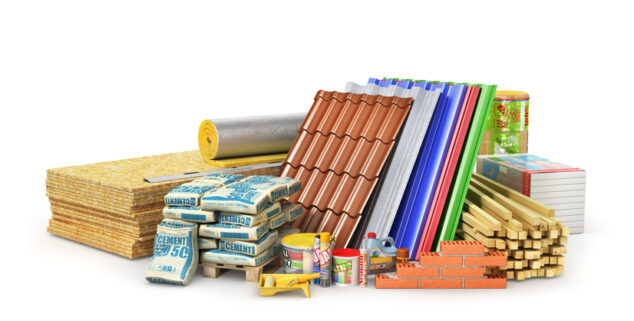Opinion
What to watch for at public works construction projects in California
 Set of construction materials. Image by urfinguss
Set of construction materials. Image by urfingussCapitol Weekly welcomes Opinions on California public policy or politics. Click here for more information about submitting an Op-Ed.
OPINION – Human beings have learned the hard way for thousands of years. You can never truly fireproof a built structure. Even with all of the changes to building codes.
Ask property owners, designers, and builders why they’re building with concrete, masonry, metal, stone, fiber-cement, and asphalt and they may not immediately tell you it’s because of pending laws in California about wildfire resilience, but there’s a direct connection. It’s wildfire threat that is changing building codes.
The legislature and governor recently reformed the state’s environmental laws ensuring quick building and re-building. Even with this focus on fire resiliency, what too often goes unnoticed are the non-combustible construction materials used in construction.
In the materials industry, we’re helping build for inevitable wildfires while delivering on the state’s environmental mandates. We’re the ones supplying materials for the biggest, most important civil infrastructure projects in the state.
We can start at the Folsom Dam near Sacramento with its use of low-carbon concrete. Then we can visit the Transbay Block 2 in East San Francisco and the nearby SFO airport to show low-carbon concrete and the specifics of what are called “green pours”—a historically significant event where new technology relies entirely on recycled concrete aggregate. These green mixes are changing civil construction in California, and they’re all non-combustible.
In Southern California, the cement, concrete and masonry used by LA Metro and at the Ports are fire resilient and transforming the way California meets climate goals in construction. In numerous instances, the elegance and utility of fire-resilient construction is such that people focus not on the products used, but on the safety and unique design attributes of the structures themselves. For example, the LAX Metro Station and People Mover where sustainable materials are used in innovative ways.
When we shine a light on built construction—big and small—we show what’s needed to be safe from fires while prioritizing our environment. Even the laying of a concrete foundation of a small structure nicknamed “Bear Cub University” deserves our attention for how companies are building fire safe.
California has been forced into a position to lead nationally in fire-resistant building standards, and the data shows our efforts work. Smart construction can reduce structure loss during wildfires by approximately 40 percent. Research by economists Judson Boomhower and Patrick Baylis found that building codes “reduced average structure loss risk during a wildfire by 16 percentage points, or about a 40% reduction.” These aren’t theoretical benefits—they’re real protections saving lives and property across our state.
The 2025 legislative session presents an unprecedented opportunity to accelerate this progress. Governor Newsom’s recent executive orders streamlining rebuilding after the Southern California fires demonstrate the state’s commitment to “accelerate rebuilding and make it more affordable” while maintaining safety standards. This moment calls for more action on material standards that protect both communities and the environment.
The California Safe Homes Act and related insurance reforms create powerful incentives for fire-resistant construction. Insurance Commissioner Ricardo Lara continues to emphasize that consumers must partner with their architects and builders to undertake necessary fire-resilient home improvements. When insurance coverage becomes tied to verified use of non-combustible materials, market forces will drive adoption faster than regulations alone ever could.
Robert Dugan is president of CalCIMA, the trade association for the construction and essential mineral industries in California.
Want to see more stories like this? Sign up for The Roundup, the free daily newsletter about California politics from the editors of Capitol Weekly. Stay up to date on the news you need to know.
Sign up below, then look for a confirmation email in your inbox.

Leave a Reply